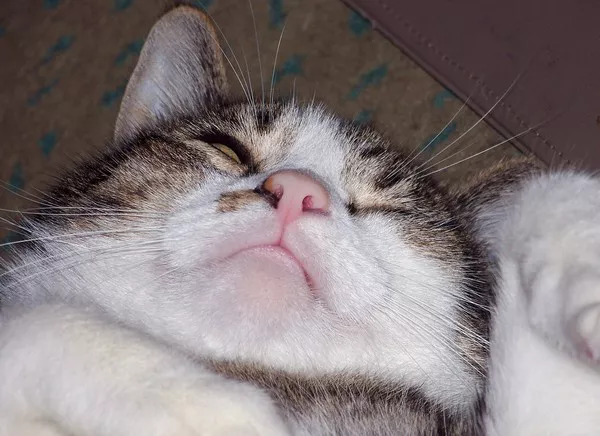Tapeworms are a common parasitic infection that can affect cats of all ages. While tapeworms are not typically fatal, they can cause a variety of health problems and discomfort for your feline companion. Recognizing the symptoms of a tapeworm infestation early can help you get your cat the treatment they need before the condition worsens. In this article, we will explore the signs, symptoms, diagnosis, and treatment options for tapeworms in cats, as well as provide helpful tips for preventing reinfection.
What Are Tapeworms?
Tapeworms are flat, segmented intestinal parasites that can live in the intestines of cats and other mammals. They are commonly acquired when a cat ingests fleas or other infected hosts. The most common tapeworm affecting cats is Dipylidium caninum, although other types of tapeworms, such as Taenia and Echinococcus, can also infect cats. Tapeworms are long and segmented, resembling grains of rice or cucumber seeds, and can be seen in your cat’s feces or around their anus.
Tapeworms attach to the lining of the cat’s intestines and absorb nutrients from the food your cat eats. Although tapeworms themselves do not directly cause significant harm in small numbers, they can lead to digestive issues, discomfort, and weight loss. Additionally, large infestations can cause malnutrition and weaken your cat’s immune system.
How Do Cats Get Tapeworms?
Understanding how cats become infected with tapeworms is essential in recognizing potential risk factors. There are several ways a cat can become infected with tapeworms:
Flea Infestation: The most common way cats get tapeworms is by ingesting fleas while grooming. Fleas can carry tapeworm larvae in their bodies, and when a cat swallows a flea during grooming, the tapeworm larvae are released into the cat’s intestines. This is why it is essential to control both fleas and tapeworms simultaneously.
Hunting and Eating Infected Animals: Cats that roam outdoors and hunt small animals, such as rodents, birds, or rabbits, are at risk of ingesting tapeworms. The small mammals or birds may carry tapeworm larvae in their bodies, which can be transferred to your cat if they eat the infected prey.
Contaminated Environment: Cats can also become infected by coming into contact with environments that contain flea eggs or tapeworm segments. This could include bedding, litter boxes, or areas where infected animals have been.
Signs and Symptoms of Tapeworm Infection in Cats
Recognizing the signs and symptoms of tapeworms in cats is crucial for early intervention. While some cats may not show any noticeable symptoms, others can experience a range of digestive issues and discomfort. Here are some common signs that your cat may have a tapeworm infection:
1. Visible Tapeworm Segments in Feces or Around the Anus
One of the most obvious signs that your cat has tapeworms is the appearance of tapeworm segments around their anus, in their feces, or in their bedding. These segments often look like small, rice-like grains, and they may move or wriggle. You may notice these segments in the litter box or in areas where your cat sleeps.
The tapeworm segments are actually the individual body parts of the parasite, and they contain eggs that can infect other animals. They are often seen when they are released from the cat’s body, either in the feces or around the anus. Sometimes, they may dry out and appear as hard, grainy substances.
2. Scooting or Dragging the Bottom
Another common symptom of tapeworms is scooting, where your cat drags their bottom along the floor. This behavior is typically an attempt to relieve itching or discomfort caused by the tapeworms around their anus. The segments of the tapeworm can cause irritation to the skin around the anus, leading to this behavior.
Scooting is not only associated with tapeworms but can also indicate other health issues, such as anal gland problems, so it is important to observe your cat’s behavior and consult a veterinarian for an accurate diagnosis.
3. Vomiting
While vomiting is a nonspecific symptom that can occur with a variety of health conditions, cats with tapeworm infections may vomit due to irritation in their digestive system. Tapeworms may cause gastrointestinal discomfort, which can lead to nausea and vomiting. If you notice your cat vomiting regularly and suspect a tapeworm infection, it is important to have them evaluated by a veterinarian.
4. Weight Loss
Tapeworms absorb nutrients from your cat’s food, which can result in weight loss even if your cat is eating regularly. While weight loss is more common in severe cases, it may be a sign of a tapeworm infestation, particularly in cats that are already underweight or have a compromised immune system. If your cat appears to be losing weight despite having a normal appetite, tapeworms could be the cause.
5. Increased Appetite
Some cats with tapeworms may experience an increased appetite due to the loss of nutrients from their food. Because tapeworms absorb nutrients directly from your cat’s digestive system, your cat may feel hungrier and eat more in an attempt to compensate for the nutritional deficit. If you notice a sudden increase in your cat’s appetite without a corresponding weight gain, it may be worth investigating further.
6. Lethargy
Cats infected with tapeworms may exhibit signs of lethargy or decreased energy. This is often a result of the parasitic infection causing discomfort or malnutrition. If your cat is sleeping more than usual or seems uninterested in play or exercise, a tapeworm infection could be a contributing factor.
7. Diarrhea or Constipation
While less common, some cats with tapeworm infections may experience changes in their stool, including diarrhea or constipation. The presence of the parasite in the intestines can irritate the digestive system, leading to abnormal bowel movements. If your cat’s stool changes consistency or they have trouble passing stool, it’s important to consult with your vet.
How Do Vets Diagnose Tapeworms in Cats?
If you suspect that your cat has a tapeworm infection, the best course of action is to schedule a visit to your veterinarian. Your vet will perform a thorough examination, which may include the following:
1. Physical Exam
Your veterinarian will perform a physical exam to check for visible signs of tapeworms, such as segments around the anus. They may also assess your cat’s overall health, including weight, coat condition, and vital signs, to determine whether there are other underlying health issues.
2. Fecal Examination
Your vet may recommend a fecal examination to check for the presence of tapeworm eggs in your cat’s stool. The vet will collect a stool sample and analyze it under a microscope to look for the eggs, which are too small to be seen with the naked eye. This test is helpful in confirming the presence of tapeworms in your cat’s intestines.
3. Tape Test
A tape test is a non-invasive method to detect tapeworms. The vet will apply a piece of transparent tape to your cat’s anus to collect any tapeworm segments that may be present. The tape is then examined under a microscope to identify the presence of tapeworm eggs or segments.
Treatment Options for Tapeworms in Cats
If your cat is diagnosed with a tapeworm infection, your veterinarian will recommend an appropriate treatment plan. The primary treatment for tapeworms is medication that targets the parasites and eliminates them from your cat’s intestines. Common treatments include:
1. Deworming Medications
The most common treatment for tapeworms is the use of deworming medications, such as praziquantel or epsiprantel. These medications are effective at killing tapeworms and can be administered as a pill, liquid, or injection. The medication works by breaking down the tapeworm’s outer shell and causing it to detach from the cat’s intestines, allowing it to be expelled from the body.
2. Flea Treatment
Since fleas are the primary vector for tapeworms, it is essential to treat your cat for fleas concurrently. This will prevent future tapeworm infestations. Your vet may recommend flea prevention products, such as topical treatments, oral medications, or flea collars, to eliminate the flea population and protect your cat from reinfection.
3. Follow-up Exams
After treatment, your vet may recommend a follow-up exam to ensure that the tapeworms have been completely eliminated. In some cases, additional rounds of deworming may be required, especially if the infestation was severe.
Preventing Tapeworms in Cats
The best way to protect your cat from tapeworms is through prevention. Here are some tips to help minimize the risk of tapeworm infections:
1. Flea Control
Regular flea prevention is the most effective way to prevent tapeworms in cats. Use flea control products recommended by your vet, such as topical treatments, oral medications, or flea collars. Make sure to treat both your cat and their environment, including bedding, carpets, and furniture, to reduce the risk of fleas.
2. Limit Outdoor Access
Cats that hunt small mammals or rodents are at a higher risk of ingesting tapeworms. If possible, keep your cat indoors or supervise them while they are outside. If your cat is an outdoor adventurer, consider implementing flea and tick prevention measures and watch for signs of tapeworms.
3. Regular Vet Check-ups
Routine veterinary exams are crucial in maintaining your cat’s overall health. Your vet can detect signs of tapeworms early and provide appropriate treatment before the condition becomes more serious.
Conclusion
Tapeworms are a common health issue in cats, but with early detection and proper treatment, they can be effectively managed. Recognizing the signs and symptoms of a tapeworm infection, such as visible segments around the anus, scooting, vomiting, weight loss, and changes in appetite or stool, can help you identify the problem and seek prompt veterinary care. Remember to also focus on flea control and regular vet check-ups to prevent future infestations. By staying proactive and vigilant about your cat’s health, you can ensure they remain happy, comfortable, and tapeworm-free.
Related Topics



























